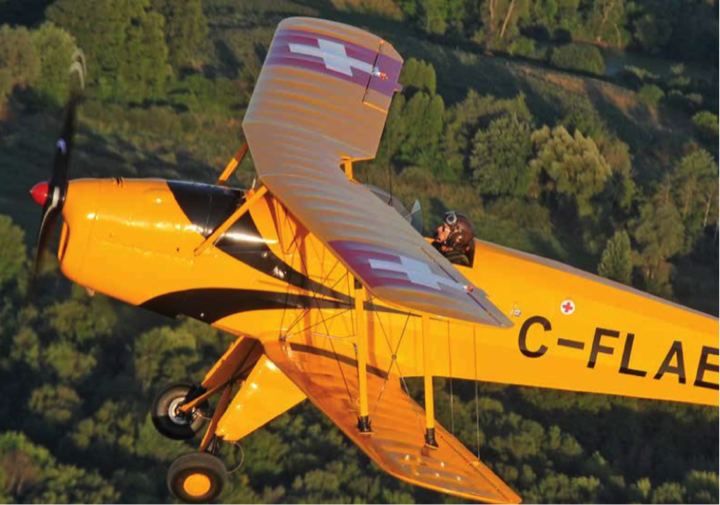
From 1935 until the mid 1970s, the Bücker Bü 133 Jungmeister (a single-seat, 160-hp biplane) was often the machine of choice of aerobatic champions throughout Europe, and is notable as being the mount of the top three winners of the 1936 Berlin Olympics — the only time powered vehicles were allowed to compete in the games.
Its flight characteristics and control harmony are sometimes referred to as the standard by which all other planes are judged. Urban myth (meaning I’ve heard this but never seen it in print) has it that the Pitts S-1 design was inspired by the Bü 133.
The Bü 131 Jungmann preceded the Jungmeister by a year and was one of the most popular training aircraft in Europe prior to World War II. It also had wonderful control response — though the pitch forces were somewhat higher. The original was powered by an 80-hp Hirth engine, and its empty weight was about 800 pounds. Several other countries produced the Jungmann with different engines, though the flight characteristics remained similar.
Many consider the Jungmann to be the ideal aerobatic training platform. Control forces are light — though not nearly as light as a Pitts or any modern high-performance aerobatic aircraft — and increase with growing airspeed. It has no bad habits and responds exactly as inputs dictate. Spin recovery in both positive and negative regimes is quick and accurate in all modes I have explored.
Because of their ability to enter easily and stop rotating right now, Jungmeisters are renowned for their snap characteristics. Jungmanns demand subtle inputs and lots of practice to snap well as they are not quite as agile, and they are more affected by weight, especially when there’s a heavy engine up front.
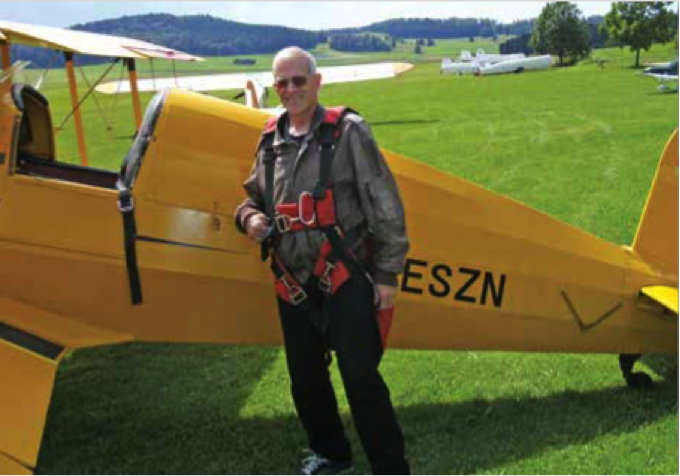
First flight in a Bü-1333in Jürgen Huffner’s Jungmeister in Degerfeld, Germany.
Elevator trim is extremely powerful in both types. During recurrent training in a few countries, some Bücker check pilots ask students to fly the circuit and land using only rudder and pitch trim (no hands on the control stick). It’s actually not that difficult in a Jungmann, but a grass runway is preferable with any crosswind.
Thirty years ago, I started competing in the Sportsman category with a Pitts S-1 and slowly moved to Advanced. I used the 0g trim position for all aerobatic flight in that plane and have continued that tradition with the Bü 131. There are pros and cons to this. On the good side: Once the line is set, the machine’s longitudinal axis is truly vertical and tends to stay there (despite some judges insisting the upline looks positive, perhaps because they are using Pitts visual criteria). This technique makes rolls on up- and downlines much easier because no pitch force is required once the vertical has been established — only aileron input is needed for the wing to track nicely around the horizon. One negative aspect of this is that in level flight considerable pitch force is required to maintain altitude. Then when more force is needed to begin a loop, the force needed becomes very high!
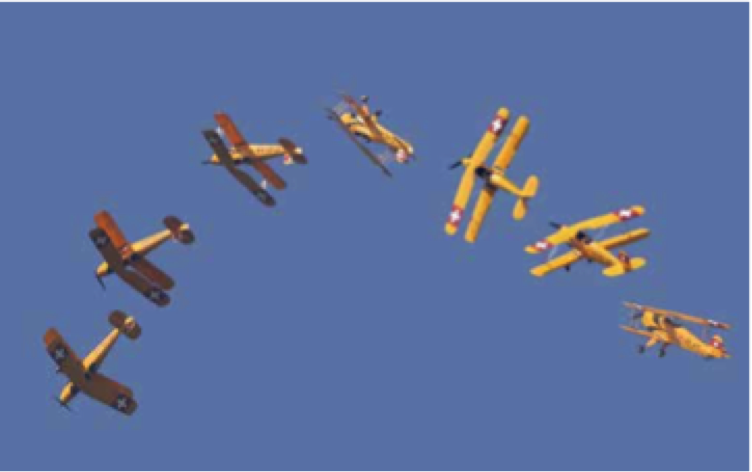
A left aileron roll at the top of a loop at the 2015 Canadian National Aerobatic Championships.
I have been flying contests in a Bü 131 Jungmann for 10 years, and I am one of only two pilots who currently fly this iconic aircraft in IAC-sanctioned events.
My Bücker has an engine that was designed and built in the 1950s for the Spanish air force: 150-hp Tigre (four-cylinder, inverted inline similar to the Gipsy Major). The empty weight of 1,050 pounds, combined with the drag of a 25-foot-wingspan biplane and relatively low horsepower, limits this plane to the Sportsman category. As with all low-power aerobatic trainers, the Jungmann needs energy that cannot be supplied by the engine alone to perform most maneuvers.
Full-throttle, level flight in my Jungmann will have the Tigre turning at max rpm (2300), and airspeed will be 200 km/h (124 mph). Two hundred is the absolute minimum entry speed for a loop that looks okay to the uninitiated, but judges will not be impressed. Two hundred will enable a vertical line up that lasts 2 seconds. More speed is the solution, which means over-revving the 60 year old engine, or diving will have to be employed to present well.
With a 250 km/h (155 mph) entry speed, it's possible to do a decent immelman, or get a one-quarter roll on a vertical up with a very short line before and after, but capping off upright or inverted will not be possible without tremendous sagging — only a humpty or hammerhead is available.
To avoid too much over-revving, the throttle is not left wide open as it is in most other types but constantly moved fore and aft to (hopefully) extend the engine’s life before overhaul. Box position has to be accurately planned and constantly monitored to ensure one doesn’t finish a figure with lots of energy and then lose it while getting into position for the next figure.
Although there are four ailerons, roll rate is about the same as a Decathlon — slow! In 2016 my son, Andy, who flies a Pitts S-1 in Advanced, convinced me to add aileron gap seals. I was dubious because I had never heard of anyone doing this on a Bücker.
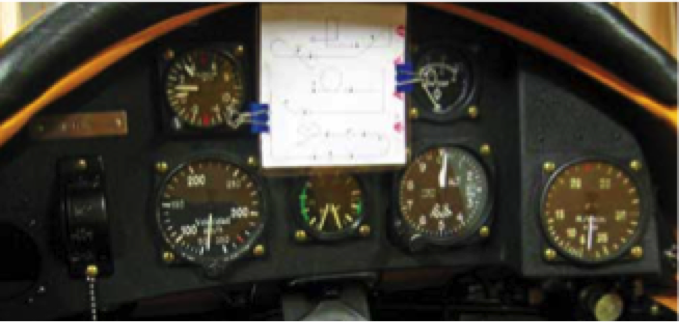
Bu-131 Instrument panel with the 2016 Sportsman Unknown
He experimented with his plane and developed an effective and inexpensive method of adding this feature. Roll rate has dramatically increased at high speeds and is a little faster at the low speeds. Thank you, Andy! After doing this mod, I discovered that Marion Cole had done the same thing on his Jungmann decades ago.
The reason for needing a faster rate of roll was the 2016 Sportsman Known. This sequence presented the most difficulty I’ve experienced in competition due to energy management in Figures 7 through 10. Leaving the vertical down of Figure 6 gives plenty of energy, but the roll (Figure 7) will take time and dissipate much of that extra speed.
Then we have to enter an Immelmann — the maneuver that needs the highest entry speed in the entire Sportsman catalog! We thought if the roll could be done quicker, there might be enough speed left for Figure 8. Even with the higher roll rate, it didn’t work. So I had to plan a break after the roll.
Placement of the Immelmann had to be right at the upwind edge of the box. It would take 6 seconds to accelerate from the semi-stalled condition after the half-roll to reach the absolute minimum speed (160 km/h) for a two-point roll, which also takes about 6 seconds — all the while going downwind!
The final figure was a 270-degree turn that often went out of the box. If I hadn’t increased the rate of roll with the gap seals, I probably would have had to take two breaks for each flight. Folks have been telling me for years I should develop a Free instead of flying the Known three times. It would have been a good idea this season as I gave away quite a few penalty points for the breaks. However, the extra practice has built character (?), and gap seals have been a real bonus!
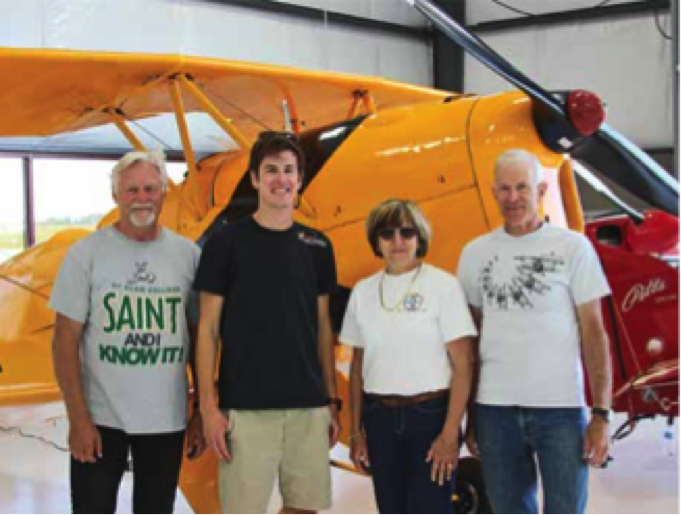
Canadians at Bellefontaine - At the 2014 Ohio aerobatic contest Left to right: Bill Ludwig, Andy Ernewein, Hella Comat, and Larry Ernewein.
Epilogue
With Andy’s help, I did get a Free program developed for this year but have not yet practiced it. My plane has been down because of a fuel tank leak. However, I will be back in the air shortly as I have finished the repair and will now be painting it.
I spent the winter helping Andy remove the aluminum leading edges on his Pitts and replacing them with mahogany plywood. I just flew it yesterday, and boy, does it ever snap fast now!

